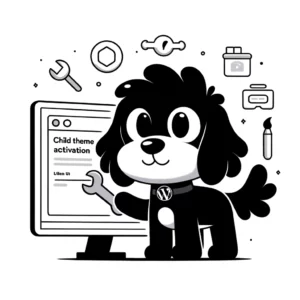Understanding Featured Content
In WordPress, featured content is pivotal in enhancing aesthetic appeal and user engagement. Spotlighting selected posts or pages optimizes user interaction on a WordPress website.
What Is Featured Content?
Featured Content refers to a specific section on a WordPress website, typically the homepage, that showcases selected posts or pages. These are chosen to highlight them as the most important or useful content to visitors. The main goal is to immediately draw attention to key areas of the website, which can be easily set up through the WordPress Customizer or dedicated plugins that provide sophisticated display options.
The Role in User Experience
The implementation of featured content significantly impacts user experience for several reasons:
- Engagement: The site encourages visitors to interact more deeply by placing compelling content front and center.
- Navigation: It aids in intuitive site exploration, easily guiding users to priority areas.
- Aesthetic: A well-designed featured content area can significantly enhance the site’s visual appeal, making it more inviting.
Selecting the right content to feature is essential, as it should reflect the most valuable and relevant information available to the audience. A well-structured featured content area is a powerful tool for keeping a WordPress website engaging and user-friendly.
Setting Up Featured Content
Creating an engaging featured content area starts with selecting a WordPress theme that supports this functionality and using plugins to enhance the display further. Careful configuration of custom post types and taxonomies ensures seamless integration with your WordPress site’s design.
Choosing the Right Theme
To showcase featured content effectively, choosing a theme that offers built-in support for highlighted posts is imperative. Within the dashboard, navigate to the Appearance section, where you can select Customize to access theme settings. Some themes require you to define a tag for featured content, which instructs the theme on which posts to highlight.
Using Plugins for Enhancement
Plugins extend the functionality of your WordPress site, enabling more complex featured content sections beyond what your theme might offer. The Display Posts Plugin allows for shortcode insertion, which helps display featured content dynamically. Furthermore, various plugins provide sliders and additional featured content areas where settings can be adjusted easily within plugin options.
Custom Post Types and Taxonomies
Advanced customization may involve custom post types and taxonomies for more precise control over what content is featured. For those comfortable with code, this can involve adding functions and filters within the theme’s functions.php file. However, for simplicity, plugins can assist in creating custom post types and taxonomies without the need for extensive coding knowledge. They enable you to specify the content to be featured through a user-friendly interface.
Creating and Managing Featured Posts
Managing featured posts in WordPress involves careful selection and presentation to ensure that they effectively capture visitors’ attention. It’s essential to balance aesthetics with functionality, providing users a seamless experience while optimizing search engines.
Styling Featured Posts
The visual appeal of featured posts is crucial—they must stand out but still feel cohesive with the site’s design. Utilizing CSS, one can customize the look of the featured content area. This could include setting a specific featured image size, adjusting the typography of titles, and applying custom colors or borders. Remember, the goal is to make featured posts visually prominent without disrupting the overall site layout.
Curating Content
The curation process for featured posts must be strategic, involving the selection of posts that will interest and engage readers. Selecting content based on categories or tags ensures a consistent theme or topic remains in focus. WordPress allows the creation of a reusable block that can be added to various parts of the site to highlight these curated posts. Include a compelling excerpt for each post to tease the content effectively.
SEO Considerations
When managing featured posts, consider SEO implications to boost visibility. Ensure each featured post has an SEO-friendly title and a meta description with targeted keywords. The featured image should have relevant alt text to improve accessibility and search engine understanding. Including structured data for posts can further enhance SEO, making the content more likely to be featured in rich snippets in search results.
Engaging Audiences with Interactive Elements
Integrating interactive elements such as social media platforms and featured content sliders can prove highly effective in capturing an audience and enhancing user interaction with your website. These tools enrich the user experience and play a pivotal role in your marketing strategy.
Incorporating Social Media
Social media within your WordPress site enables you to tap into a dynamic market and foster engagement. Make your content shareable by embedding Twitter feeds or Facebook posts directly into your pages. This allows visitors to interact with your social content without leaving your website. For instance, providing links to the latest promotions or sharing new content through social media widgets keeps your audience updated and encourages direct interaction.
Adding a Featured Content Slider
A Featured Content Slider is a powerful tool for showcasing prominent articles, products, or services on your site. Such sliders grant users an interactive experience by allowing them to scroll through various items. Including a slider can increase the visibility of your highlights and promotions, as it draws attention to them in a visually attractive and engaging format. Ensure the slider is responsive and easy to navigate, ensuring a smooth user experience across all devices.
Advanced Featured Content Strategies
When elevating featured content, the savvy WordPress user employs advanced strategies to enhance user engagement. Techniques such as customized styling and understanding platform-specific features enable a site’s featured content to stand out and meet organizational goals.
Customizing with CSS and HTML
Customizing featured content with CSS and HTML allows for high visual customization. Users may create a visually appealing featured content area by modifying the CSS. This can be done by applying unique styles to the post’s classes within the WordPress loop. By accessing the theme’s Customizer, one can add or alter the CSS and HTML to better suit the branding and design of the site.
To apply advanced customizations:
- Navigate to Appearance > Customize in the dashboard.
- Use the Additional CSS section to enhance the styling.
- Incorporate HTML changes by editing the template files, ensuring featured content has a distinctive and professional look.
A tutorial on integrating unique styling can be found through guides like Customizer: Featured Content, which explain the process in detail.
WordPress.com vs WordPress.org Considerations
Understanding the differences between WordPress.com and WordPress.org is critical for web hosting and usability considerations. WordPress.com offers a more user-friendly platform with built-in features that facilitate the easy configuration of featured content. In contrast, WordPress.org requires more hands-on management but allows greater flexibility with third-party plugins and custom code.
For advanced users:
- WordPress.org allows the implementation of custom loops to showcase portfolio projects, products, or other content.
- On WordPress.com, one might be limited by the platform’s constraints, but one can still use the tools provided to create a landing page or highlight featured posts with a less technical setup.











